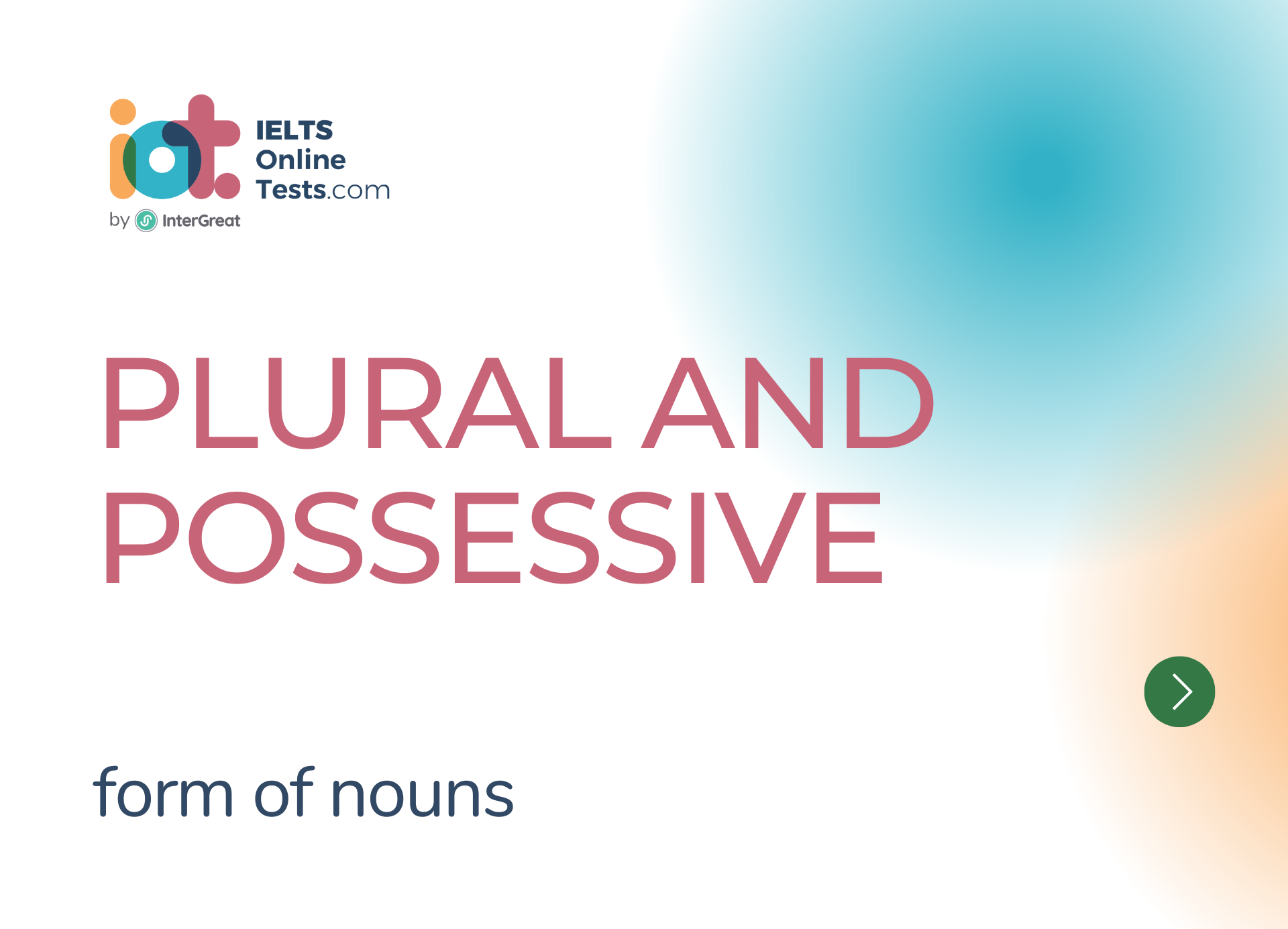
Plural and Possessive Forms of Nouns
Let's explore the plural and possessive forms of nouns in English:
PLURAL FORMS OF NOUNS:
Regular Plurals: Most nouns form their plural by adding "-s" to the singular form.
- Examples:
- cat (singular), cats (plural);
- book (singular), books (plural).
- Examples:
Plurals Ending in "-s," "-sh," "-ch," "-x," or "-z": Nouns ending in these sounds form the plural by adding "-es" to the singular form.
- Examples:
- box (singular), boxes (plural);
- dish (singular), dishes (plural).
- Examples:
Plurals Ending in "-y": Nouns ending in a consonant followed by "-y" change the "-y" to "-ies" in the plural form.
- Examples:
- city (singular), cities (plural);
- baby (singular), babies (plural).
- Examples:
Irregular Plurals: Some nouns have irregular plural forms that do not follow the usual rules.
- Examples:
- child (singular), children (plural);
- tooth (singular), teeth (plural).
- Examples:
Plurals with Unchanged Form: Certain nouns have the same form in both singular and plural.
- Examples:
- sheep (singular and plural),
- deer (singular and plural).
- Examples:
POSSESSIVE FORMS OF NOUNS:
Singular Possessive: To indicate ownership or possession by a single person or thing, an apostrophe ('s) is added to the singular noun.
- Examples:
- John's car,
- the cat's tail,
- the book's cover.
- Examples:
Plural Possessive: To indicate ownership or possession by multiple persons or things, an apostrophe (') is added after the plural noun ending in "-s."
- Examples:
- the cats' toys,
- the books' pages.
- Examples:
Possessive with Irregular Plurals: When an irregular plural noun does not end in "-s," the apostrophe ('s) is added as if it were a singular noun.
- Examples:
- children's toys,
- women's rights.
- Examples:
Joint Possession: When two or more persons share ownership, the apostrophe ('s) is added to the last noun in the series.
- Examples:
- John and Mary's house,
- the company and its employees' success.
- Examples:
It's important to note that not all nouns have a possessive form. Inanimate objects or abstract concepts, for example, are not typically used in the possessive form. Additionally, possessive pronouns like "yours," "mine," and "theirs" are used to indicate possession without the need for an apostrophe.
Understanding the plural and possessive forms of nouns is essential for correct grammar usage. By applying these rules, you can accurately express ownership and indicate quantities in your writing and speech.




